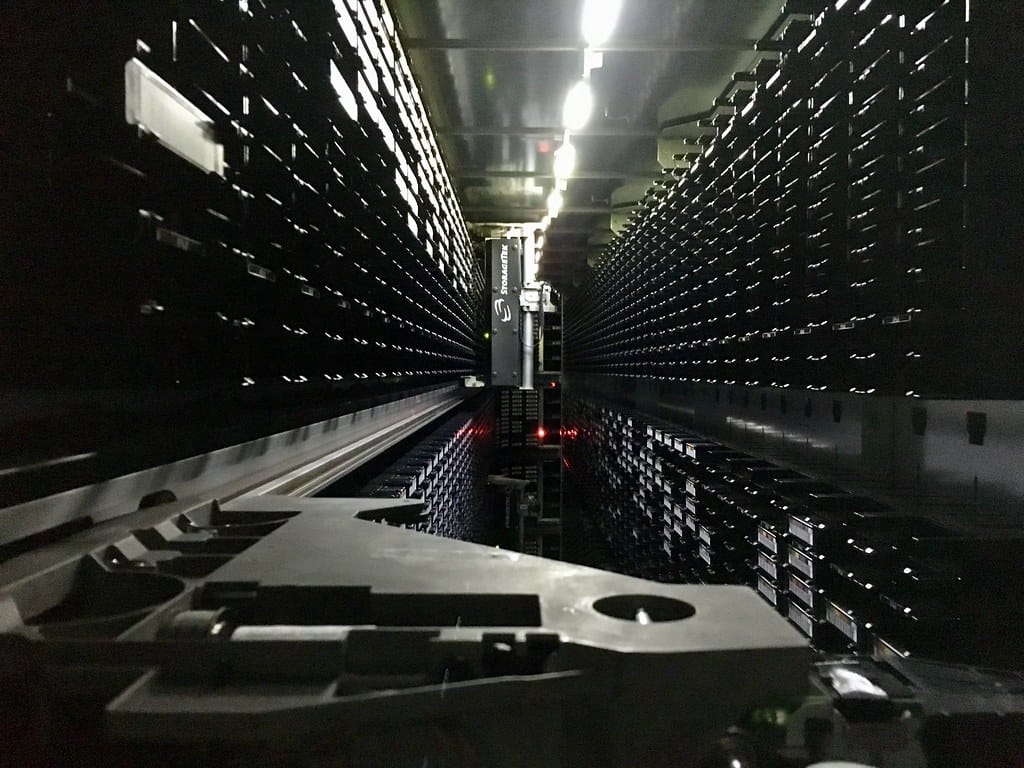Seagate's 30TB HAMR Drives Hit Market at $600: A Data Storage Revolution
The data storage landscape just witnessed a seismic shift as Seagate officially launched its groundbreaking 30TB HAMR (Heat-Assisted Magnetic Recording) drives, priced at $600 per unit. This milestone represents not just an incremental upgrade, but a fundamental leap forward in storage technology that promises to reshape how enterprises and data centers handle the ever-growing digital deluge.
The HAMR Technology Breakthrough
Heat-Assisted Magnetic Recording isn't merely a clever acronym—it's a revolutionary approach to data storage that has taken over a decade to perfect. Unlike traditional magnetic recording, HAMR uses a tiny laser to heat specific areas of the disk surface to approximately 400°C, temporarily reducing the magnetic coercivity and allowing for much smaller magnetic domains.
This precision heating enables Seagate to pack an unprecedented 1.2 terabits per square inch of storage density, effectively doubling the capacity of previous-generation drives. The 30TB capacity represents a 50% increase over the current 20TB drives dominating the enterprise market.
Market Impact and Competitive Landscape
The $600 price point positions these drives at approximately $20 per terabyte, marking a significant value proposition in the enterprise storage market. To put this in perspective, when Seagate first introduced 1TB drives in 2007, the cost per terabyte exceeded $300. This dramatic price reduction, combined with the massive capacity increase, creates compelling economics for data-intensive operations.
Major cloud providers like Amazon Web Services, Microsoft Azure, and Google Cloud have already expressed interest in these drives for their data centers, where storage efficiency directly impacts operational costs. A single 30TB drive can replace multiple smaller drives, reducing power consumption, cooling requirements, and physical rack space—critical considerations in modern data centers.
Real-World Applications and Use Cases
The 30TB HAMR drives aren't just about bigger numbers; they're enabling entirely new possibilities across various sectors:
Enterprise Data Centers: Organizations can now store petabytes of data using fewer physical drives, reducing infrastructure costs and improving reliability through fewer failure points.
Content Creation and Media: Video production companies working with 8K footage and large-scale digital archives can significantly streamline their storage workflows. A single drive can now hold approximately 7,500 hours of HD video content.
Scientific Computing: Research institutions dealing with massive datasets—from climate modeling to genomic sequencing—can process and store information more efficiently than ever before.
Backup and Archival Solutions: The high capacity makes these drives particularly attractive for long-term data retention strategies, where cost per gigabyte is paramount.
Technical Specifications and Performance
Beyond the impressive capacity, these HAMR drives maintain enterprise-grade performance standards. They operate at 7,200 RPM with sustained transfer rates of up to 272 MB/s, ensuring that the massive capacity doesn't come at the expense of speed.
The drives feature a 2.5 million-hour Mean Time Between Failures (MTBF) rating and include advanced error correction algorithms specifically designed to work with HAMR technology. Power consumption remains competitive at 8.8 watts during active operation, remarkable considering the increased capacity.
Challenges and Considerations
Despite the technological triumph, HAMR drives face some adoption hurdles. The laser technology introduces additional complexity, potentially affecting long-term reliability—though Seagate's extensive testing suggests these concerns are largely mitigated. Additionally, the drives require specialized firmware and may need system updates for optimal performance.
The current production capacity is limited, with Seagate planning to ramp up manufacturing throughout 2024. Early adopters may experience supply constraints, particularly given the high demand from major cloud providers.
Looking Forward: The Future of Storage
The successful commercialization of HAMR technology signals the beginning of a new era in data storage. Seagate has already announced plans for 50TB drives using the same technology, with even higher capacities on the horizon. This progression comes at a critical time when global data creation is expected to reach 175 zettabytes by 2025.
The ripple effects will extend beyond mere capacity increases. As storage becomes more efficient and cost-effective, new applications in artificial intelligence, Internet of Things, and edge computing become economically viable.
Conclusion
Seagate's 30TB HAMR drives represent more than a technical achievement—they're a catalyst for the next phase of digital transformation. At $600 per drive, they offer unprecedented value for organizations drowning in data while opening new possibilities for innovation across industries. As production scales and prices continue to fall, these drives will likely become the new standard for enterprise storage, fundamentally changing how we think about data capacity and management in the digital age.

